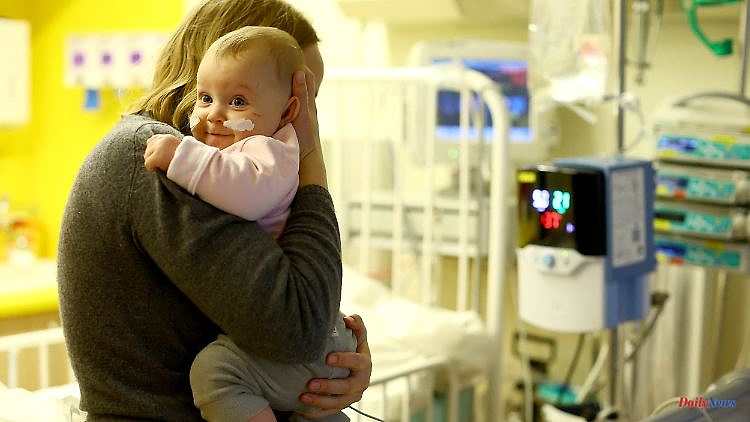A huge wave of infection drives children and parents in droves to children's clinics. However, many are turned away there because there are not enough beds. When asked by the left, it became clear that beds for children had been systematically removed for years. Group leader Bartsch calls the reasons for this "shameful".
German children's hospitals also reduced beds last year. The number decreased by 288 to 25,920 from 2020 to 2021. This emerges from data from the Federal Statistical Office at the request of the left-wing faction in the Bundestag. Group leader Dietmar Bartsch criticized the trend.
Pediatricians had raised the alarm in many children's hospitals in the past few days because of an emergency. One of the current reasons is a wave of respiratory infections. But the capacity has also been falling for years. According to the Federal Statistical Office, between 2018 and 2020 the number of beds for the treatment of children and adolescents fell by 455. Nursing staff are often lacking to utilize the available beds.
Bartsch said: "These are shameful numbers. Fewer beds for children in German clinics every year. The health system 'saves' on our little ones because they don't 'pay'. This scandalous logic must come to an end."
Health Minister Karl Lauterbach has promised help. The Bundestag has decided that there should be an additional 300 million euros each for children's hospitals in 2023 and 2024. A reform of hospital reimbursement is to follow. Bartsch asked Lauterbach to act quickly. "In rich Germany, it cannot be that children or adult patients are turned away."
According to the Society for Child and Adolescent Medicine, the number of beds in paediatrics fell by a third between 1991 and 2017. During the same period, the annual number of cases increased from an average of 900,000 treated children and adolescents to more than one million.












